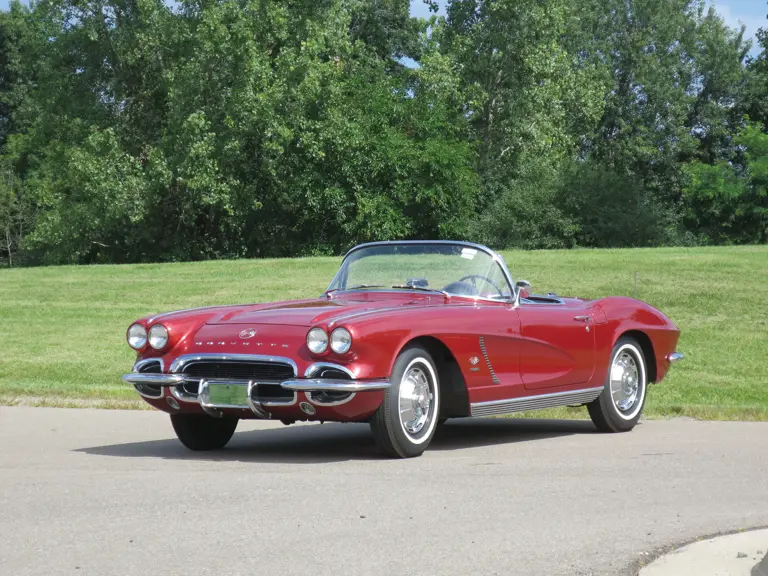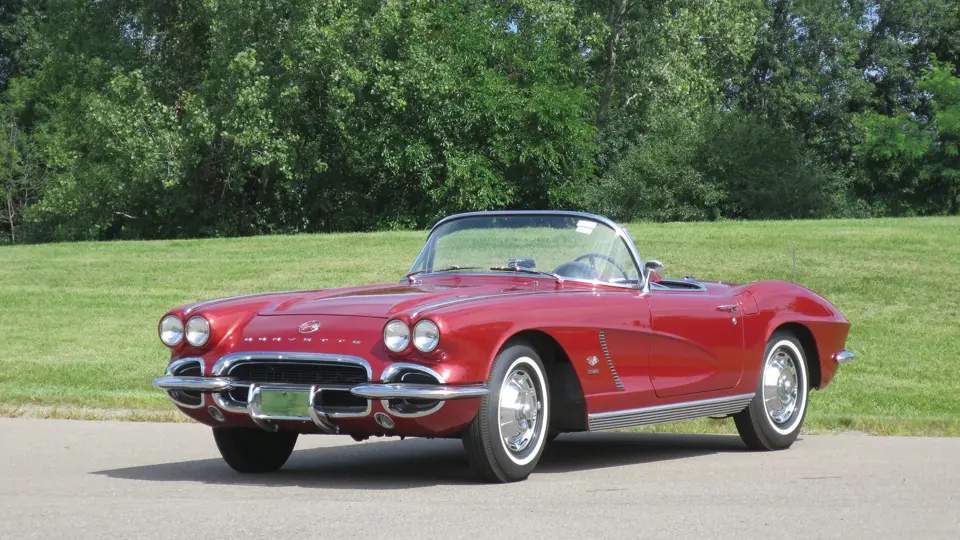Launched in 1956, it was the second series cars that earned Corvette the title of “America’s Sports Car.” The clean good looks of Harley Earl’s new body struck a chord with the American public, and the new design was soon outselling the older style, even at its peak, by a margin of three-to-one. The big news from Corvette in 1962, which represented the final year of the first-generation models with solid rear axles, was the enlarged 327-cubic inch V-8. This 15-percent increase in engine displacement brought with it a meaningful jump in both horsepower and torque, rendering the Corvette even easier and more fun to drive. The Corvette gained a competitive edge on the racetrack, and it was a winner on the sales floor as well, with 1962 sales fully one-third higher than 1961 levels.
In 1962, the most-powerful Corvette engine was the regular production, order number 582, fuel-injected 327 V-8, such as seen with this car, and now offered in just one very highly-developed state of tune with a hot solid-lifter camshaft, free-breathing cylinder heads, and the proven Rochester mechanical fuel-injection unit. Amazingly, 1,918 Corvette buyers, representing 13-percent of the 14,531 total production, opted for this relatively expensive option in 1962, paying an additional $484.20 to enjoy the growing mystique and performance of the “fuelie.”
This Honduras Maroon convertible has a black interior, and along with the coveted fuel injection powerplant, the Corvette also has the quite desirable four-speed manual transmission. The car is nicely accented with whitewall tires and factory hubcaps.



 | Auburn, Indiana
| Auburn, Indiana


